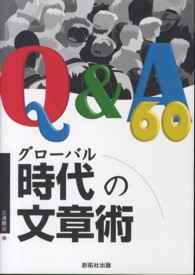Full Description
The Roadmap of Research: A Guide to Understanding and Writing a Medical Study helps readers easily grasp the context, methodologies, findings, and implications of research studies, build on previous work, avoid redundancies, and identify areas where new studies can contribute significantly. The book enables researchers to innovate, propose new ideas, and design studies that contribute novel perspectives or methodologies to the field. Each step in this roadmap plays a pivotal role in the research process, from building a foundation of knowledge through reading and understanding, to generating new ideas through critical thinking, and finally, disseminating findings through clear and effective writing.
Contents
PART I RESEARCH PRINCIPLES / RESEARCH PROTOCOL PREPARATION PROCESS
1. Problem definition - PICOT
2. Literature review - the search for evidence
3. Types of scientific study
4. Evidence-based medicine
5. How to conduct a systematic review - basic tutorial
PART II HOW TO WRITE YOUR SCIENTIFIC ARTICLE
1. How to schedule your writing time
2. Definition of the scheme: theme, importance, hypotheses, objectives
3. Anatomy of an article: introduction
4. Anatomy of an article: methods
5. Anatomy of an article: results, tables, and figures
6. Anatomy of an article: discussion, conclusion, and references
7. Anatomy of an article: title, summary, and keywords
8. Checklist before submission
PART III MOST FREQUENT STATISTICAL METHODS
1. Risk measures and meaning of P
2. Power calculation and sample size.
3. Randomization strategies
4. Meta-analysis
PART IV RELEVANT ASPECTS OF THE STUDY
1. Understanding inclusion and exclusion criteria
2. Guidelines for adapting and obtaining informed consent
3. Guidelines for ethical review of the protocol
4. What are the principles and when to apply your project to an ethics committee
PART V UNDERSTANDING LITERATURE
1. The importance of good medical practice as a basis of evidence in the decision-making process
2. How to search for an article using referral programs
3. Bad editorial practices
4. Strengths, weaknesses, opportunities, and threats (SWOT)
5. Critical reading of an article (WORKSHOP)
PART VI NEW TECHNOLOGIES IN RESEARCH
1. The 7 principles of education
2. Gamification
3. Virtual reality in medicine
4. Augmented reality in medicine
5. Artificial intelligence







